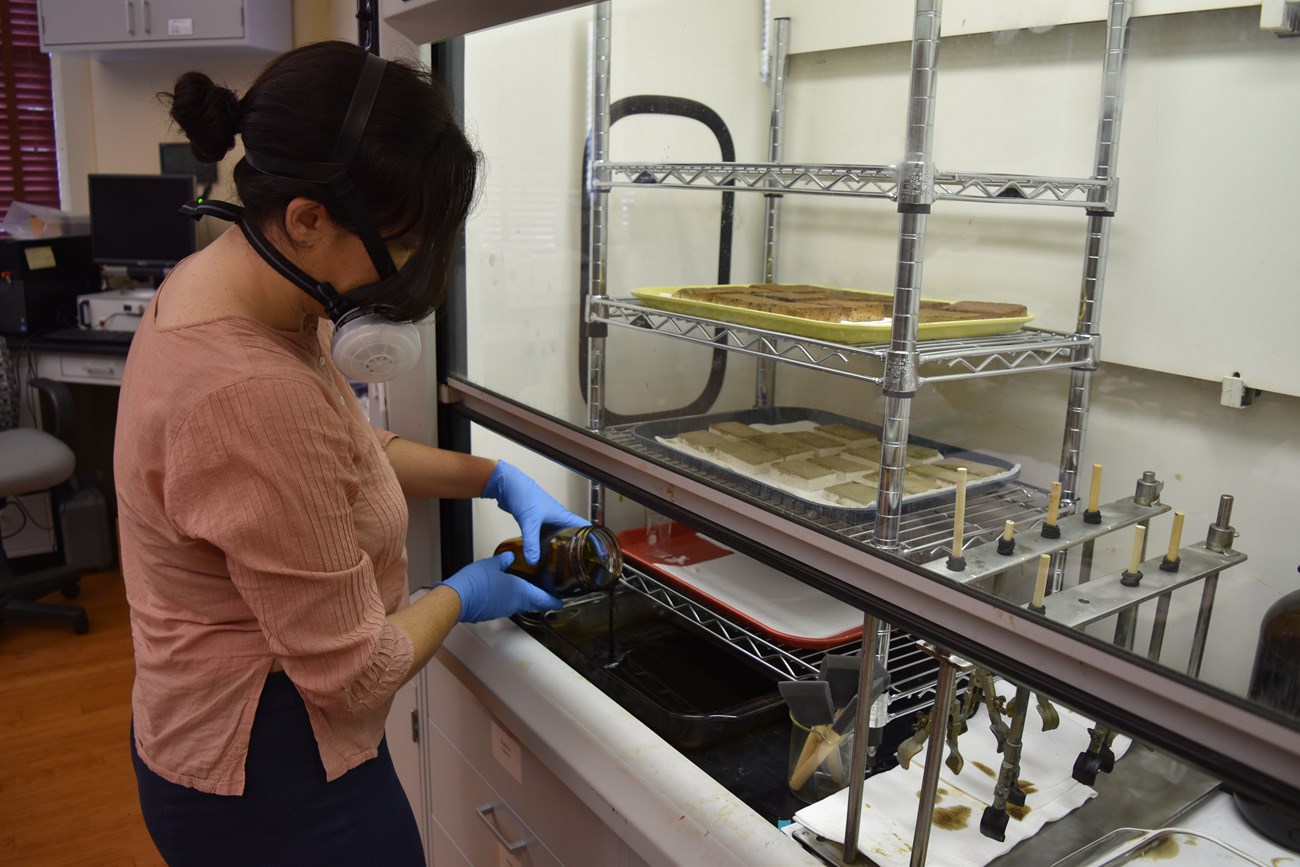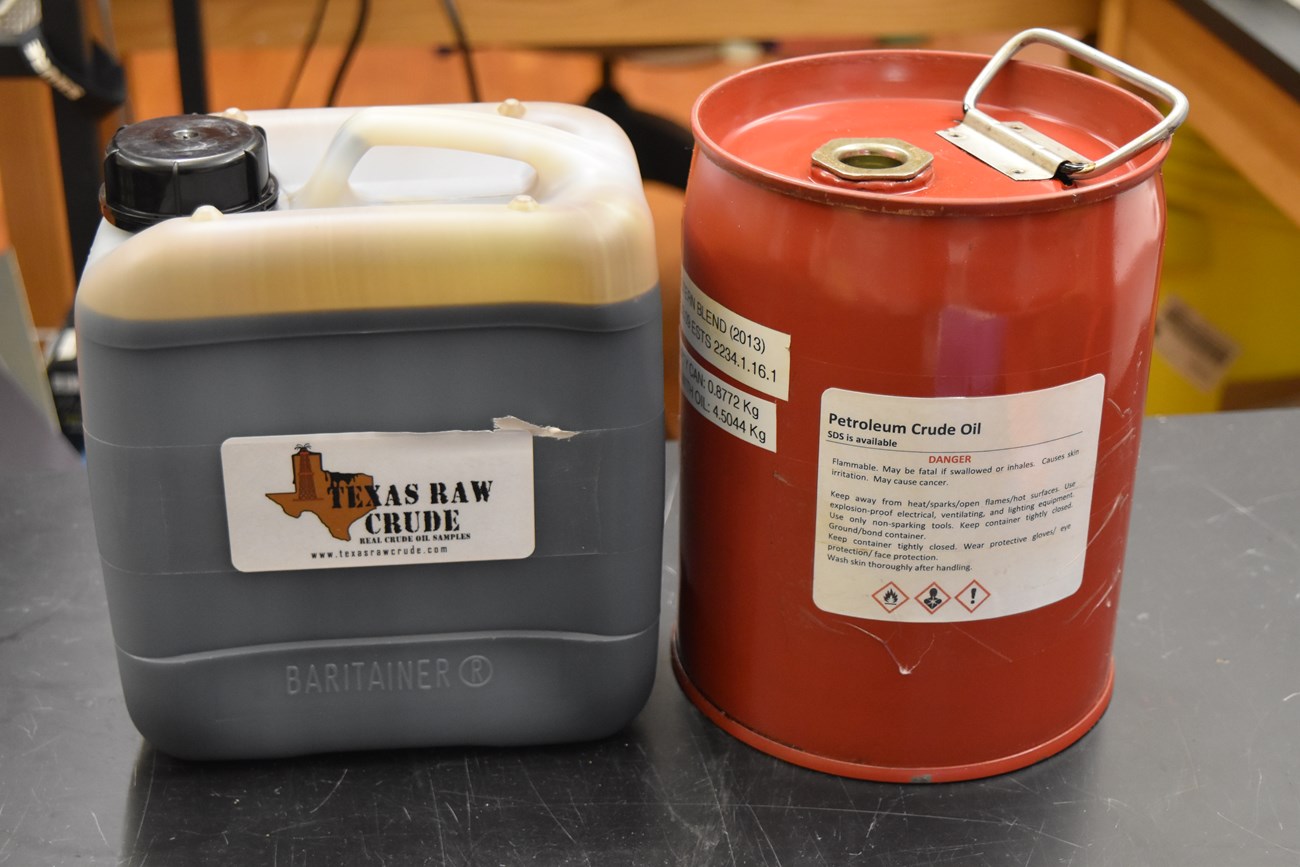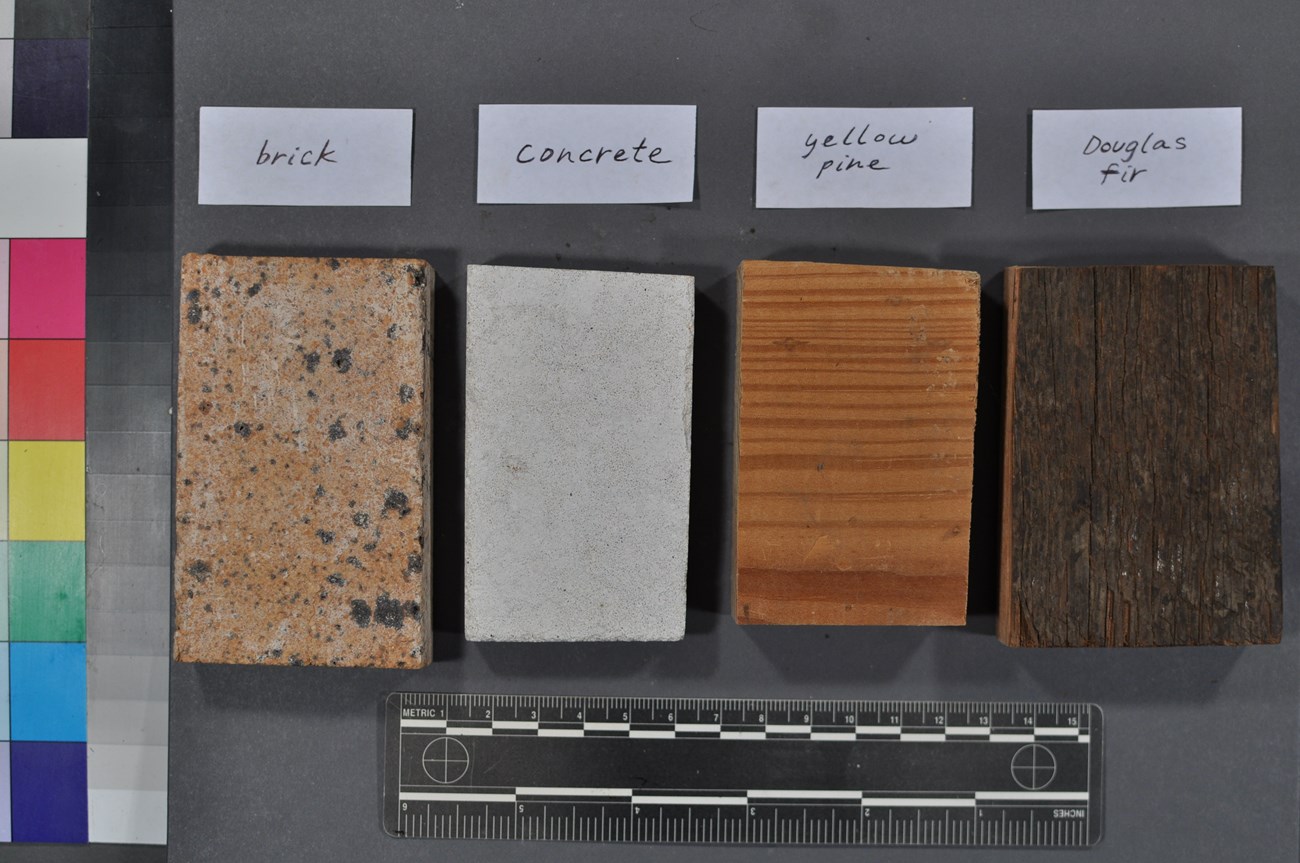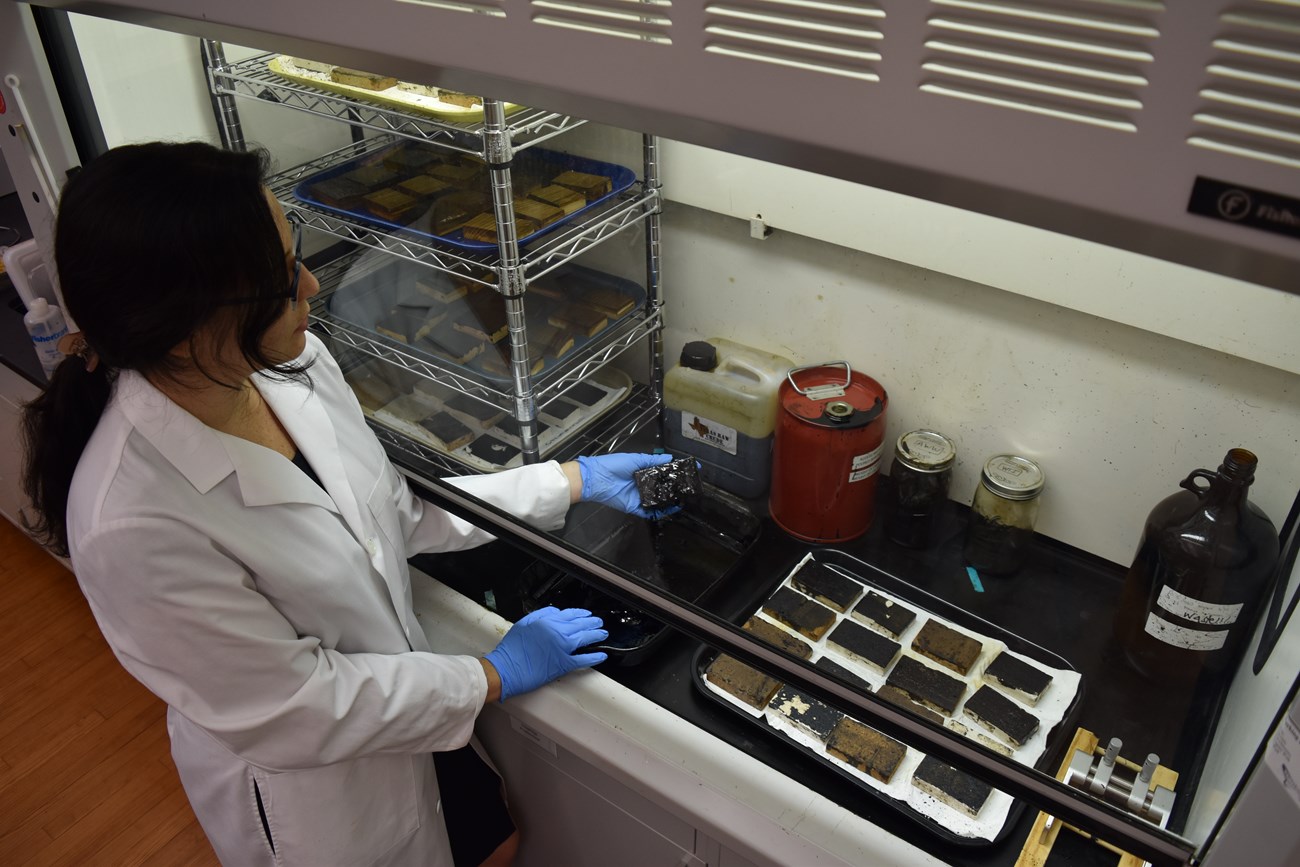Last updated: October 8, 2021
Article
Designing an Experiment with Crude Oil
My name is Elizabeth Salmon and I am examining crude oil removal agents in the Materials Conservation Program. The aim of this research is to identify commercial products that can remove oil from historic materials while limiting the physical and chemical damage associated with oil contamination. These products, which are marketed specifically for oil cleanup, are called Surface Washing Agents (SWA). This work is being carried out by NCPTT as part of the U.S. Department of the Interior Oil Spill Preparedness Project (IOSPP).
At NCPTT, we approach research from the perspective of a conservator; in other words, with concern for the longevity and integrity of historic and cultural materials. This left much to be learned about the properties of crude oil and the products designed to clean or contain it. In sharing our methods for designing this experiment, I hope to outline one example of how conservation can (and often must) look to the knowledge base of other disciplines to better preserve cultural heritage.

When I arrived at NCPTT in January 2018, my first task was to refine the experimental design and decide which crude oils, historic materials, and SWAs were best suited to build a broadly applicable survey of oil spill response at cultural heritage sites. I began by considering oils that are likely to spill in an inland environment, in other words, oils that are typically transported by pipeline, truck, or rail. Oil is largely classified by viscosity, ranging from light to heavy, so it was important to select multiple crude oils with varying viscosity. This property is important because it is indicative of how oil will interact with materials. For example, light oils are likely to penetrate the surface of a historic substrate, which may be quite porous, whereas heavy oils will primarily sit on the surface, creating a barrier that may trap moisture in the system. Both effects will cause long-term damage to the material and each situation may demand different oil remediation tactics. Ultimately, the popularity of certain crude oil blends, both current and projected, became a factor in the selection process; as the volume of oil circulating increases, as does the chance that a spill will occur during transportation.

The first oil that we selected was West Texas Intermediate, a light-medium viscosity “sweet” crude oil that is used as a benchmark for oil pricing. Qualifying oil as “sweet” or “sour” refers to its sulfur content (a “sweet” crude oil contains less than 0.42% sulfur). We also selected Access West Winter Blend, a diluted bitumen oil. Bitumen is a heavy form of petroleum extracted from Canadian “oil sands” and imported to the U.S. in large quantities. Once extracted, the bitumen is mixed with a diluent, or a lower density hydrocarbon, until the viscosity lowers sufficiently that it can be transported by pipeline. The amount of diluted bitumen traveling to the U.S. has steadily increased in recent years and this trend is expected to continue. As such projections take effect, the increased volume and distance traveled leads to a higher likelihood of an oil spill involving diluted bitumen, making it important to understand and prevent associated damage to cultural resources.
A survey of recent inland oil spills revealed that Arkansas, North Dakota, and surrounding areas have been at particularly high risk, posing a threat to both natural and cultural resources. Architectural materials common to these regions of the United States were placed under special consideration as we chose substrates. (Prior research at NCPTT looked at oil remediation for archaeological materials and coastal sites). Ultimately, we selected brick, concrete, and wood substrates for this experiment.

To establish continuity for this study, the bricks used in a 2011 oil remediation study at NCPTT were selected once again. They are pre-World War II bricks that are hard but porous, with red to brown coloration and uniform iron inclusions. We selected a concrete that was likely cast in the 1960s, which has had ample time to carbonate and cure. The concrete is made from white portland cement and the aggregate, which is expected to have the most significant effect on the porosity and absorbance of the concrete, is mason sand. Though portland cement is not a component of earlier concrete, its rise in popularity is concurrent with technological advancements in the 1920s that allowed broadened use of concrete. All samples were cut to ensure that a weathered, exterior face acts as the front face of the sample.
In our selection of wood substrates, we considered how the properties of a particular species may effect its susceptibility to oiling and treatment. For example, refractory species grow in such a way that the border pits (the valves connecting cells) are closed tightly, impeding the movement of moisture and chemicals between cells and making the wood less absorbent. Species that do not fall into this category have relatively open “valves” that behave differently and tend to be much more absorbent. It is our hope that selecting both a refractory species, Douglas fir, and a non-refractory species, southern yellow pine, will result in broadly representational data. Both species of wood are also common building materials. Old-growth wood was selected (rather than modern samples) to ensure that species adaptations do not affect the applicability of this study to historic wood. For example, yellow pine is known to have sustained changes to its species in the last fifty years due to changes in growth patterns.
Finally, we selected six SWA’s from the Environmental Protection Agency’s National Contingency Plan Product Schedule for testing. Products must be included on this list in order to be employed on site as spill response agents. We selected products that were low in toxicity, pH neutral or slightly basic, and readily available in various amounts. For the first phase of this study, we chose products with a range of active ingredients that were expected to have varied remediation mechanisms.

SWA’s are typically classified as either “lift and float” or “lift and disperse” agents, referring to their oil remediation mechanism. The former dissolves or lifts oil, forming surface slicks that can be recovered from water. The latter uses a detergency mechanism to emulsify the oil, dispersing it in a water body or stream of rinse water. For this study, we selected three products that we believed to be “lift and float” agents as well as three “lift and disperse” agents. At face value, such descriptors refer only to the effect of the product on the relationship between oil and water. As this research progresses, though, I am finding that such monikers reveal information about the physical properties of the products and, subsequently, how they will interact with materials.
I look forward to sharing more information about the effects of surface washing agents on oil-contaminated historic materials as the research continues!
